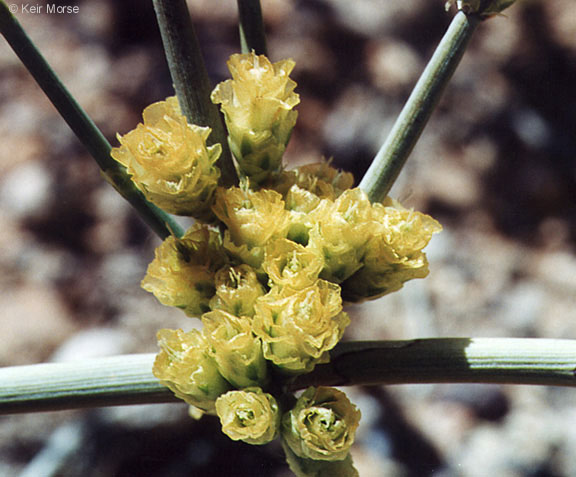Ephedra nevadensis

Common:esert Tea, Brigham Young weed, Desert Herb, Mormon tea, Squaw Tea, and Teamster's Tea
Family: Ephedraceae
Range/Origin: Southwestern N. America - Arizona, California, Nevada, Oregon and Utah. Native at elevations 2-6000'.
Light: Full sun
Water: Can handle drought, reflected heat
Temperature: Hardy to 0 degrees F. Not hardy above 7000 feet.
Broom-like shrub which somewhat resembles Shavegrass. Its various species can be found in the arid areas of the Northern Hemisphere, including the deserts of the southwestern U.S. The jointed, grooved green stems and branches of some species reach heights of up to 7 feet, but most are smaller.
Two or three scale-like leaves, more or less persistent depending on the species, grow at each joint in the stem and branches. Male and female cones appear on different plants, the male featuring prominent yellow pollen sacs.
Desert Tea has been used as a diuretic, febrifuge, and tonic. Although most commonly taken as a pleasant beverage, Desert Tea has also been used as a remedy for kidney and bladder problems. Natives of the American Southwest drink a decoction several times a day to relieve kidney pain or to treat a fever. American Indians use it, both internally and externally, to treat syphilis and mucous discharges. Early pioneers considered desert tea a good "blood purifier."